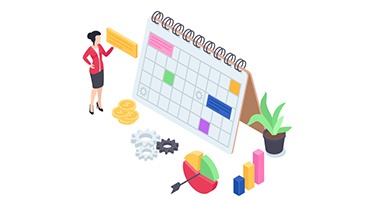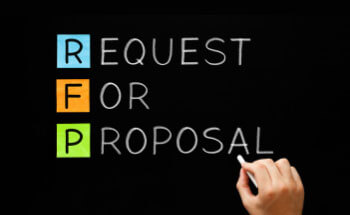
Membership associations thrive on being a place their members can go for specific content, training and events for their area of expertise. But while an org’s content will already be focused on a particular domain, their audience of members will break down into multiple niches all with their own unique combination of interests.
When that’s the case, content personalization becomes a crucial part of your membership experience. When your members open up an email or log into your portal, you want them to feel that the content they see has been designed and served with them in mind. The more you can cultivate that feeling, the more you can use it to drive sales and signups for events, courses and opportunities.
More importantly, it makes it easier for members to see the value you have on offer. If they aren’t aware of the content you have or where to look for it, this can lead to frustration and later attrition. Content personalization makes that content hard for them to miss, whether by spotlighting it when a member logs into the system or by pushing it out to draw disengaged members in.
Learn what moves your members to click
When members come to an association for professional development, they’re usually looking for content on specific topics. They’ve established a niche in their career and they want to dig deeper into that. The problem is that if they aren’t being served personalized content, they might not know what you have to offer in their area of interest or where to find it.
If you have data on which topics a member cares about and their area of focus, you can understand what they’re more likely to engage with in the future. You can then recommend webinars, courses and journals that are specific to their interests.
There are two kinds of data you can collect about your members. One is using declarative information, for example the details that they list on their profile. The other is deducing what you can from the content they access, and building up a persona based on what people with similar interests engage with.
The more focused you can be in your targeting, the better

For example, imagine you’re an association for veterinarians. While your membership base professional interest in animal healthcare, you’ll have numerous breakdowns into specific niches within that – such as primary care or specialist, or small or large animal practitioners.
If you’re pushing the same content about breathing disorders in dogs to all of your members, the vast majority of them won’t be interested because it’s not in their field. And this is a direct hit to the membership experience. The more they see content that isn’t for them, the more those members will start to question the value of being part of the association.
But if you can access accurate data on your membership base’s interests and engagement, you can know which members are small animal practitioners with a particular focus on treating canine breathing issues and suggest that content only to them– and not to members who won’t be interested. You can go further than pushing content too – for instance, when they’re on your careers page, your association can recommend personalized opportunities that fit their experience, specialism and geographical location.
You don’t have to do everything at once
Associations can often make the mistake of thinking that their options are going all in with a cutting-edge recommendation engine or doing no personalization at all. Faced with that choice, it’s easy to assume that content personalization is too overwhelming and expensive to try out.
It’s true that there are powerful, complex and expensive personalization tools out there, like Optimizely and Google Optimize. But diving in at the deep end isn’t the only way to get involved. There are cheaper and less complex tools available, such as WordPress plugins, and these give you an easy way to set up some success metrics and see how it goes.
Content personalization might involve a technical solution, but associations don’t need to be running at the tech frontier for this. What’s more important is to figure out what your organizational goals are, define your strategy and make sure the tools you use are supporting those.
Start by addressing the goal that’s most important to your association

While on the surface content personalization is a way to get more eyes onto your resources, it can be far more than this. Ultimately, it can provide a tactical way of supporting your association’s wider strategic goals – and this is where we’d recommend you begin.
Consider membership renewals, for example. Associations are always looking for ways to boost retention and membership engagement, and content personalization can be critical to that.
Start by focusing on your members most at risk of dropping away and use your data to figure out their personas. Once you have a picture of who they are and why they may leave, you can launch a campaign to mitigate this risk by delivering content you believe they want to engage with. The more they engage with your content – even if it’s only emails or social content to begin with – the more likely they’ll be to step up their involvement over time and see the value of renewing.
Alternatively, you could use content personalization to better support your events and education services. For example, if a member is engaging with content as part of their continued education goal, your content personalization could point out an upcoming conference that will get them the final 10 CE credits they need. As well as boosting engagement with education and events, this helps that member to see even more of the value that your org has to offer.
In order to support your association’s goals through content personalization, it’s critical to be proactive. If you only personalize what users see when they log into your system, the only people who see that value will be regularly returning members. The members at risk of not renewing won’t be coming into the system normally, so you need to push personalized content to them and start pulling them back in.
To learn more, see what associations need to know about the membership experience. Or to find out more about digital strategy can help enhance your membership engagement, take a look at our case studies or get in touch.






